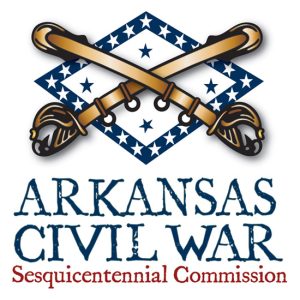calsfoundation@cals.org
White River Expedition (December 13–15, 1864)
| Location: | DeValls Bluff (Prairie County), White River, Little Red River, Augusta (Woodruff County), Cache River |
| Campaign: | White River Campaign |
| Date: | December 13–15, 1864 |
| Principal Commanders: | Colonel Hans Mattson (US); Unknown (CS) |
| Forces Engaged: | Third Minnesota Infantry, Ninth Kansas Cavalry (US); Various Confederate units (CS) |
| Casualties: | None (US); 29 captured (CS) |
| Result: | Union army gained intelligence in the area |
On December 13, Union colonel Hans Mattson, under the orders of his commanding division, proceeded to board the Third Minnesota Infantry, with 400 infantry and 150 cavalry, from DeValls Bluff (Prairie County) onto the steamers Sir William Wallace and Kate Hart. At 8:00 that evening, Col. Mattson dispatched Captain John Flesher along with seventy-five cavalry at Peach Orchard Bluff, along the White River. Later that evening, ninety-five infantry under the command of Captain O. F. Dreher disembarked at Negro Hill—present-day Georgetown (White County)—and another ninety-five infantry under Lieutenant R. M. Armstrong at the mouth of the Little Red River. Mattson disembarked with the remainder of the troops along the White River, approximately eight miles below Augusta at 1:30 a.m. on December 14.
Before daylight, Mattson moved seventy-five cavalry under Captain Henry F. Goss and seventy-five infantry under Captain C. T. Taylor to Gray’s Ferry, ten miles to the east of Augusta. After taking possession of the ferry, he moved the cavalry across and stationed the infantry at the ferry landing, while allowing the cavalry to scour the area east of Cache River. Mattson was able to reach “Widow Thomas’ place” (or “Widow Thompson’s”) before anyone noticed him.
Mattson then reported that, upon being spotted, the Confederates in the area scattered. It was noted that Confederate colonels T. H. McCray, Archibald S. Dobbins, S. D. Jackman, and Thomas R. Freeman moved into the woods where Union forces could not reach them. Capt. Flesher failed to rendezvous with Colonel Mattson at Widow Thomas’ as expected due to his cavalry’s inability to cross the Cache area.
Union intelligence ultimately provided Mattson with the information that colonels McCray and Dobbins were reorganizing their respective troops and met in an area six to eight miles east of Gray’s Ferry on December 16. Intelligence also noted that the area surrounding Gray’s Ferry was enveloped with small bands of Confederate soldiers and jayhawkers moving toward the rendezvous. The Confederate forces were gathering the abundance of corn and cattle in the area, and the local inhabitants were ready for Union forces to regain control, as they found the Confederates to be annoying marauders.
Learning that the Confederate forces numbered roughly 500 (although unarmed and short on ammunition), Mattson reconsidered his strategy and returned to Augusta on December 14, where he joined Capt. Flesher, who had captured a number of Confederate troops in an area called “The Point.” Lieutenant Colonel Everett W. Foster, who had remained in the Augusta area, captured contraband goods being transported from Memphis, Tennessee, to the western side of the White River. Mattson was convinced that an extensive contraband trade was being carried out at Memphis.
At 4:00 a.m. on December 15, Mattson collected the troops at the Little Red River and Negro Hill, who had captured Confederates at or around West Point (White County) and the salt works in the vicinity. A Confederate captain Rayborne (possibly Howell “Doc” Rayburn, misspelled) was in the area, and the salt works were being run under the command of General Joseph Shelby. Mattson realized that he should have destroyed the salt works prior to his departure from Augusta. During his march, roughly a dozen Confederates fired at his troops six miles below the Little Red River area, but no one was injured on either side. The expedition ended with their return to DeValls Bluff.
In addition to intelligence gathered, the result of this expedition was the capture of five Confederate officers, twenty-four Confederate soldiers, three citizens, and twenty-eight horses. There were no fatalities. Mattson also acquired ten barrels of salt, one barrel of pork, and a half barrel of molasses, all of which had been smuggled through Memphis as part of the contraband trade route. The Union soldiers also destroyed a number of small arms during their expedition. Mattson mentioned that he did not destroy the ferry, as he found it to be a convenience to the locals rather than to the Confederates in the area.
For additional information:
The War of the Rebellion: A Compilation of the Official Records of the Union and Confederate Armies. Series I, Vol. 41, pp. 989–991. Washington DC: Government Printing Office, 1893.
 Civil War Timeline
Civil War Timeline Military
Military ACWSC Logo
ACWSC Logo 



Comments
No comments on this entry yet.